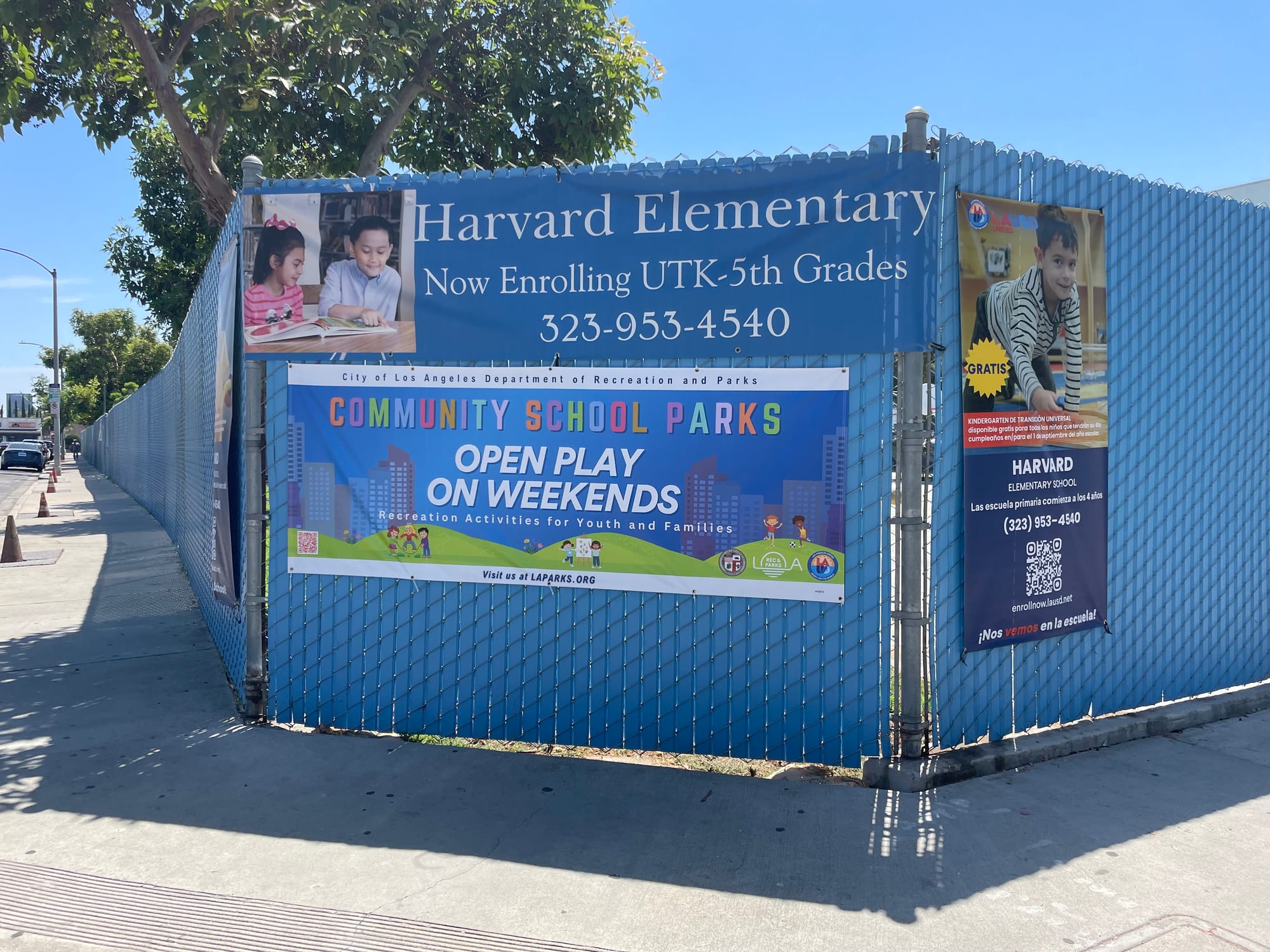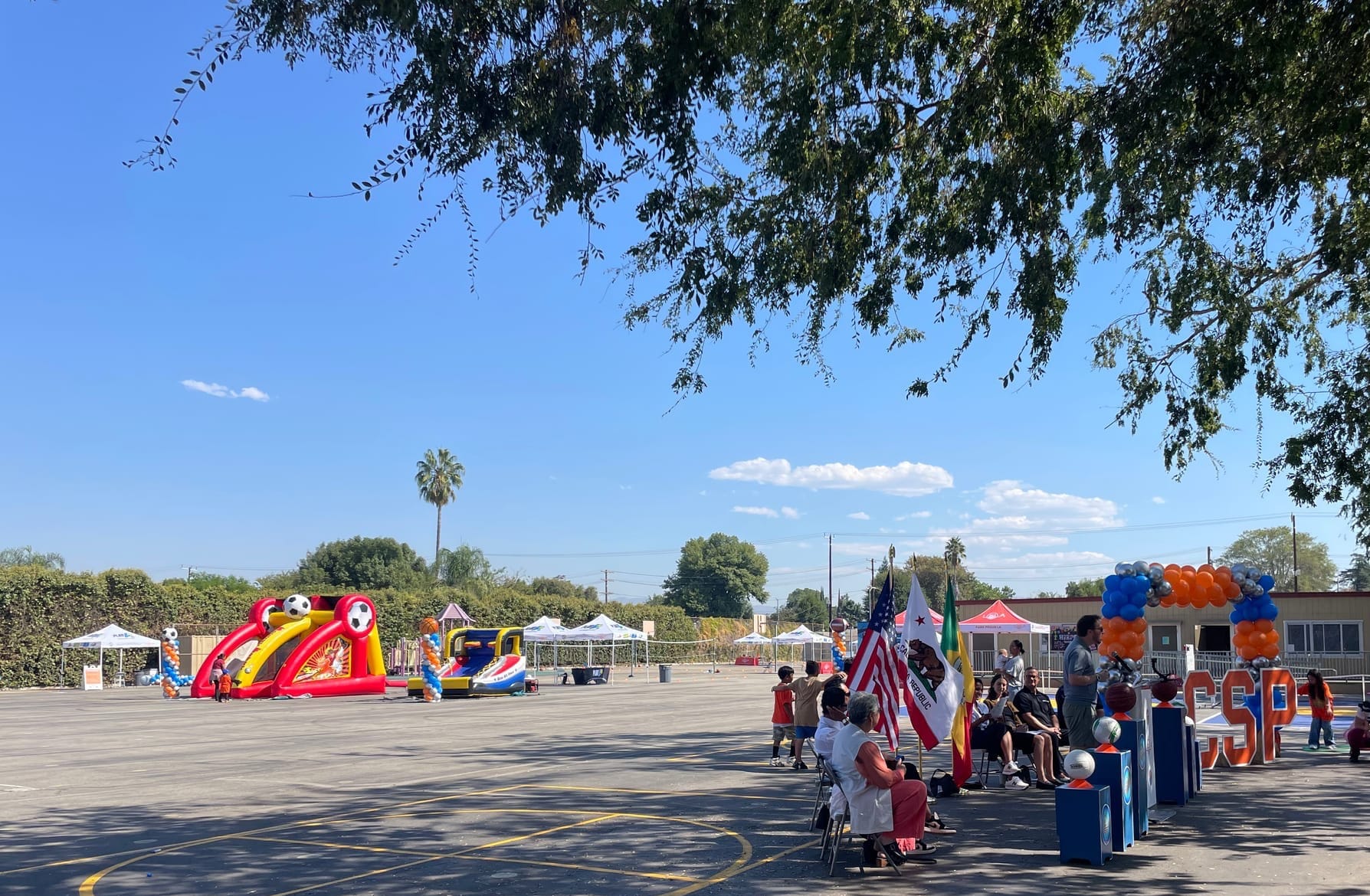The transit-first (no, really) games
In the end, LA28 put the events where the public transportation will already be
In the Trust for Public Land's 2024 report, the city of Los Angeles's parks rank 88th out of 100 U.S. cities. That's correct: 88th

Each year, the Trust for Public Land's ParkScore index ranks the 100 most populous U.S. cities according to park access, equity, acreage, investment, and amenities. And each year, I await the release of this index with a growing sense of dread about how much lower Los Angeles will appear.
In the Trust for Public Land's 2024 report, the city of Los Angeles's parks rank 88th out of 100 U.S. cities. That's correct: 88th. Last year we were 80th. Eight years ago, we were 65th. At this rate, by the time the Olympics roll around, we will be at the rock bottom of this list.
When you look at TPL's list, your first reaction may be to argue that some of those cities are very small. It's easy for Irvine, a planned community of 300,000, to rank #4. So I used TPL's data tools to compare LA to what we might consider to be our peer cities. LA is an outlier in almost every category.
As you look at those numbers, here are more extremely relevant data points for LA residents to consider. Low-income neighborhoods have 73 percent less park space than high-income neighborhoods. Neighborhoods of color have 66 percent less park space than white neighborhoods.
I was so distressed after this year's 8-point slide that I called up Guillermo Rodriguez, TPL's California state director and vice president of the Pacific region. Rodriguez, very generously, praised county-level efforts like Measure A, a parcel tax passed in 2016 that funds parks as well as a regional needs-assessment similar to TPL's analysis. But when it comes to explaining the city of LA's slipping scores, it's pretty simple, Rodriguez says: other cities are improving so much that LA's getting left behind. "They're increasing their investments in parks and open space, and really that's what's been impacting Los Angeles," he says. "It's been a little disconcerting to see LA moving in the wrong direction."
One of the most troubling LA indicators is related to access: only 63 percent of LA residents are within a 10-minute walk to a park. Adding new park space might feel impossible in a city where any available land could be used to combat the housing crisis. But it can happen: Rodriguez lives in San Francisco, which hit the 100-percent mark in 2017. And one way the city did it is by opening public schoolyards as parks, he says. "This would be a relatively easy way for Los Angeles to not only improve scores, but to really surgically target neighborhoods that today don't have access to parks." The data proves it out. According to another TPL report, if all 1000 LAUSD schoolyards were opened as parks, the number of Angelenos within a 10-minute walk to a park would skyrocket to 87.7 percent.
Finally, after a decade of false promises, that's exactly what the city of LA is starting to do.

Last Saturday, I visited the Community School Parks site at Garden Grove Elementary in Reseda, one of 10 parks now open on the weekend on LAUSD campuses. Kids in neon orange shirts scurried across the schoolyard, launching basketballs into giant inflatable hoops and kicking soccerballs into giant inflatable goals. Rec and Parks staffers passed out cups of water under shade structures equipped with a handful of mister fans. Blue and yellow pickleball courts — which proved very popular with kids and adults alike — had been recently installed as a both a recess activity and a new neighborhood amenity attempting to draw in the weekend crowds. There were many happy faces smeared bright pink with strawberry paletas. (This was the grand opening, so there was also lots of free ice cream.)
Like the other nine LAUSD schools, Garden Grove was chosen specifically to fill in park access gaps in those extremely high-need areas on TPL's map. A joint-use agreement between LAUSD and the parks department allows the schoolyard to be used during non-school hours as recreational space. (In fact, voting yes on the city's Measure II, which is on your November ballot, will make it even easier for LA and LAUSD to work together on such agreements in the future.) Although a handful of campuses have been opened independently, LA and LAUSD have been trying, mostly unsuccessfully, to scale this program since 2008. In 2012, two campuses were opened through People for Parks and closed within a few years. Another effort launched in 2018 at four campuses was ended during the pandemic. This time, thanks to a concerted push by Councilmember Nithya Raman's office, the Community School Parks program is funded and has dedicated staff — not an easy task with a parks department that's been eviscerated by budget cuts. But the need is urgent. As Raman pointed out just before the ribbon cutting, when dozens of kids busted gleefully through a paper banner, many nearby families live in apartment buildings without access to a safe outdoor place to play: "There are too many Angelenos living in neighborhoods that lack any recreational or open space."
It's a simple idea that makes too much sense. LAUSD is the largest landowner in the county. This is public land that everyone has a right to use. And the message to LAUSD leadership was clear. "I want to put a call out to all the principals," said Jimmy Kim, general manager of LA's Department of Recreation and Parks. "We're ready."

While it was all very exciting, it was also extremely, extremely hot. By noon the temperature had crept past 90 degrees. On a regular LAUSD school day, that's usually the cutoff for when my kids would be brought inside from their asphalt schoolyard, where a shadeless surface can reach temperatures of over 120 degrees. And the vast majority of LAUSD's schoolyards — including where my kids go to school — look just like Garden Grove: no grass, few trees, and a severely outdated playground plopped in the middle of acres and acres of cracked blacktop.
"Opening the gate is a critical first step in the consciousness raising that needs to happen," says Teresa Dahl, a former LAUSD sustainable schoolyard ombudsman and former co-director of People for Parks, who worked to get the two LAUSD schools open in 2012. But, "in order to be successful and loved by their communities, CSPs must be designed to support the same activities that parks do — opportunities to connect with nature, to cool off, relax, and play under trees with neighbors," she told me. "Imagine if each one were transformed into a mini Griffith Park or Kenneth Hahn Park — what that would mean for our city’s youth, for our communities, for our city as a whole?"
Garden Grove, fortunately, is in line for a greening project; some of the other campuses that are being opened already have grass fields and more shade trees. But there are only a handful of LAUSD campuses that have been greened to the high-quality, park-like standards that Dahl is describing — and they're more likely to be in whiter, wealthier neighborhoods that aren't park-deprived. While opening a schoolyard as a park is important for access, it doesn't address the bigger problem: most LAUSD schoolyards don't resemble parks at all. The LA Parks Foundation is preparing a report to recruit additional partnerships and funding to potentially change that. But much of that funding will come from a new $9 billion LAUSD bond measure, Measure US, that you'll also be voting on this November. If LAUSD leadership had thought this through a little more instead of rushing the measure to the ballot, the district would have touted the bond measure as a park-creation tool — a chance to both green public schoolyards and truly open them to the public.
Because the real goal here is not just a schoolyard that's open for a few hours on the weekend, but a true joint-powers authority that can co-locate and maintain a park on every LAUSD campus that looks and functions more like a world-class Rec and Parks facility. And, like parks, schoolyards would ideally become places where we can all seek refuge from hot apartments on increasingly sweltering days. Yet another TPL report notes that a park — with shade and vegetation — can cool down a neighborhood by up to 6 degrees.
Using the surgical precision Rodriguez describes, LA could open and green enough LAUSD schoolyards over the next few years to significantly improve our TPL ParkServe ranking. In fact, "park need" already factors into LAUSD's own greening index, which it has used to prioritize projects to achieve the district's goal to have 30 percent of all campuses greened by 2035. With support of groups like the LA Parks Foundation, this goal could be achieved even faster. Creating dozens of new parks, updated playgrounds, athletic fields, and pickleball courts would certainly would be a better look for a city that's hosting the world's biggest sporting events for three years in a row. But it would also mean that, as a city, we're finally prioritizing true public gathering places in a city starving for them. 🔥